We wanted to introduce you to this beautiful article by El Habib Ben Amara, an architect and urban designer from a tribal ksar (fortified oasis) in Algeria, who’s been working with a partner of ours. He’s an activist against desertification and one of the foremost authorities on sustainable water management in the Sahara, and has written for major Algerian newspapers.
There’s a lot of crossover with what we should be doing in the West (via water commons and natural wastewater treatment), and drought, desertification and soil erosion everywhere will have huge implications for global food prices / supply, and is contributing significantly to ongoing ecological, societal and economic collapse.
It’s tragic that people like Habib have the knowledge to address these kinds of problems, but are sidelined by governments and corporations set on a path of Western economic and technological ‘development’. We’re going to follow this up with further articles about:
- a) how unchecked economic and technological growth are destroying ecological systems, not just in arid areas, but all around the world, in the same way that the quest for conquest and growth in the ancient world ignored ancient wisdom and turned the ‘Fertile Crescent’ and North Africa (once the breadbasket of Rome) into desert more than 2000 years ago, and
- b) how ancient knowledge is being lost / destroyed, the implications for human and ecological well-being, and how we can choose the most benign technology of all ages, to provide the things we need sustainably and equitably.
Here’s a fully-referenced pdf of this article.

1. The Chronicles of the Last Oasis: A Tale of Wisdom and Redemption
“Outside the city, there is nothing but a desert of sand and rocky terrain, enclosed behind a mountain that stretches from one horizon to the other, like an infinite rampart. Within the inhospitable desert, life has a taste of miracle.”
Between the rocks and sands of the desert, where water is scarce, the fortified villages, called “ksar,” were more than just villages. They embodied the integration of habitat into its environment, fortresses of resilience, guardians of ancient wisdom.
These ksour, surrounded by oases, created a unique agroforestry, where abundance was passed down through generations, drawing from cultural values and teachings of the elders.
Growing up in one of these ksour in the southern Maghreb countries, I witnessed the cruel degradation of these palm groves. The oasis, once a symbol of agroforestry, now faces disappearance and deterioration, used as a dumping ground for wastewater from modern urban areas, testifying to the rapid and deliberate destruction, in just a few decades, of a heritage built over several centuries of hard work.
In the 1980s, my childhood memories recall lush groves brimming with a variety of fruits.
“I remember thinking it was odd that this lush green forest should be bursting from the desert,” said Geoff Lawton when he saw one of these food forests in the desert for the first time in 1975.
Today, this landscape is marked by desolation, urbanization, and poor socio-economic management, turning once-accessible fruits into luxury items, while staple vegetables are grappling with shortages.
Traditional knowledge held by local and indigenous communities about managing forests and trees is disappearing globally due to various pressures. Policies promoting development often ignore traditional forest management practices that historically provided food security for these communities.
The degradation of land, caused by deforestation, overgrazing, or urban development, alters precipitation patterns, impacting the availability of groundwater during the dry season and intensifying floods during the rainy season.
However, amid this loss, a glimmer of hope emerges. Flashes of ancient wisdom guide towards reintegrating oasis agricultural techniques. Palm groves, treasures of a forgotten heritage, hold abandoned agricultural knowledge, much like the ruins of ksour settlements.
An action strategy offers hope for the regeneration of palm groves, where communities can create abundance, generate jobs, and combat drought by purifying wastewater and harvesting rainwater. To raise awareness among Muslim communities in Africa about regenerative agriculture and water conservation, a faith-based approach, using the language of the Quran, is proposed. Quranic teachings emphasize the value of water, the sanctity of the land, and the importance of palm groves, and trees.
To reverse environmental decline, it is crucial to challenge prevailing fatalism and seek motivating solutions, including those found in sacred texts, rather than accepting the status quo.
The regeneration of palm groves can become an achievable goal with the commitment of farmers, authorities, and organizations, ensuring food security and self-sufficiency while preserving these historical treasures.
2. Ksour : More Than Just Ruins
“The shapes of houses, sometimes transmitted through a hundred generations, seem eternally valid” Bernard Rudofsky.
In the heart of desert lands, the ksour, traditional villages, reveal a harmony between nature and habitat, but their current state is deplorable. Constructed with local materials, these ksour demonstrate a deep understanding of the desert environment.
Their dense structures use thermal mass and insulation to maintain a stable temperature without artificial cooling, while watchtowers and thick walls regulate heat, ensuring protection against extreme weather conditions.
The influence of climate on culture is evident in the layout of ksour houses, designed to deflect prevailing winds. An introverted design, with narrow streets, prioritizes privacy in a society devoted to family life. Shaded courtyards promote passive cooling, enhancing safety and comfort.
Passive cooling techniques, such as natural ventilation, are integrated, with central squares serving as hubs for community life. Applying these principles of bioclimatic architecture offers innovative solutions for ventilation, water collection, waste reuse, and thermal insulation.
Ksour in arid regions have developed clever water collection systems, intertwining their structures with the oasis. The central squares preserve traditional skills and reflect the cultural context. Preserving these techniques is crucial, emphasizing sustainability and climate adaptation.
Respecting local culture in urban design strengthens identity, while community involvement promotes sustainable development. Ksour have adopted advanced waste management techniques relevant to cities grappling with water issues. The lessons from ksour provide insights for modern urban design, highlighting sustainable solutions against the heat island effect. Despite their resilience to extreme conditions, these lessons are often overlooked.
Associations for the preservation of ksour heritage play a crucial role despite challenges such as lack of financial resources and limited awareness. These reflections led me to establish an association for the preservation of the sociocultural heritage of ksour 25 years ago, hoping to initiate a new paradigm and preserve the cultural significance of ksour in the face of various contemporary challenges. Unfortunately, its lifespan was short.

3. Ancient Water Harvesting Techniques
“Do not be proud on account of your knowledge, but discuss with the ignorant as with the wise. The limit of art cannot be delivered; there is no artist whose talent is fulfilled” Ptah-Hotep.
Many books and researches are dedicated to this ancient wisdom in dealing with water.
For about 3000 years, farmers in extremely arid areas have employed rainwater harvesting techniques to channel water to their fields, enabling ancient crops to thrive in regions with an annual rainfall as low as 100 millimeters. These methods spread across the Middle East, North Africa, China, India, northwest Mexico, and the southwest United States.
Facing water scarcity and drought, many countries have turned to desalination. While this process provides an expensive solution for numerous coastal areas struggling with limited water supplies, it falls short of addressing the global water crisis. The costs associated with desalination are prohibitively high for farmers, who are the largest consumers of water worldwide. Similar to ambitious mega-projects envisioned by engineers, desalination offers an unrealistic hope for a supply-side solution, delaying the much-needed water efficiency revolution.
In situations where water supplies need expansion, smaller-scale projects such as shallow groundwater wells, garden irrigation, and small reservoirs for local runoff storage show significant potential for increasing food production cost-effectively and with minimal environmental impact. Many of these initiatives can be funded and developed privately by local communities if they have access to appropriate technologies and credit.
In the Maghreb, ancient oases reveal wisdom in rainwater collection using traditional techniques such as Foggara, shallow basins called “Ghail,” roof water harvesting, gypsum dams (Jub), terrace systems, Meskat, the Jessour system, and fog collection, forming a mosaic of ancient techniques. Thus, they form the most viable basis for the development of a workable soil and water conservation strategy for the future.
Forgotten practices, like building stone lines to reduce erosion, have been rediscovered in Burkina Faso. The stone lines, also known as bunds, cause rainwater to spread out over the land and slowly infiltrate the soil, rather than running off the field. Many farmers also built deep planting holes, called zai or tassa, that collect and concentrate rainfall runoff around the plants, they also combined half-moons earth embankment in the shape of a semi-circle. “They are the biggest single success story of water harvesting in West Africa over the last 25 years.”
These techniques can increase yields by 30 to 60% in the first year, offering a promising outlook for water conservation in arid regions. Traditional farming practices in the Maghreb, such as selecting drought-resistant crops, crop rotation, combined with modern drip irrigation and mulching techniques, emerge as climate-adapted strategies.
The integration of these traditional practices remains crucial – addressing water scarcity and promoting sustainability. This involves community awareness and updates to laws and regulations.
In 2001, I initiated a project to transform an empty lot into a green esplanade, featuring green spaces, fountains, and trees. The project promoted nature-based solutions in urban design, underscoring the significance of water and vegetation. Prioritizing urban forests in municipal planning is crucial to maximize the benefits of trees and green infrastructure, while minimizing the costs of traditional infrastructure. Urban forests play a vital role in combating desertification, revitalizing degraded soils, preventing droughts and floods, and enhancing community well-being.
City landscapes and open spaces are valuable assets that reinforce a sense of place, improve human health, and provide ecosystem services, such as reducing the heat island effect.
The art of designing urban forests and green spaces creates sustainable living places that benefit both people and nature. Well-designed urban forests align with community needs, promote sustainability, and enhance environmental quality.
By reimagining urban design, architecture, transportation, and planning, cities can transform into “urban ecosystems” that address global challenges like climate change, food and energy security, health, employment, biodiversity conservation, watershed management, and disaster risk reduction.
Healthy urban forests are pivotal in sustainable water management, contributing to the cleaning, conservation, and storage of water while reducing the risk of water-related disasters. They enhance water quality by intercepting air pollutants, reducing sediments, and filtering rainwater. In urban environments, they minimize damaging runoff and decrease flooding severity by improving soil infiltration.
This project advocated for nature-based solutions through green infrastructure, emphasizing the fundamental role of water and vegetation in urban design. In conclusion, reviving ancient rainwater harvesting methods requires a delicate blend of tradition and innovation.
As we face the challenges of arid landscapes, the echoes of ancient practices beckon us – not just as solutions but as a timeless connection to the essence of life: water.

4. Wastewater Purification
“Those in developing countries, and in remote and small communities of developed countries, can neither afford the considerable infrastructure and machinery upkeep/maintenance requirements of centralized sewage treatment, nor will they benefit as much as by intelligent on-site, decentralized systems”. M.Nelson.
In 2010, faced with a water shortage after the 2008 floods, I presented wastewater purification solutions based on reeds (phragmites) during a study day at the city’s Cultural Center.
The idea was ignored and, paradoxically, belittled.
The significance of every drop of water in arid environments remains underestimated, even in arid areas.
This initiative led to the creation of an association against drought and desertification, but its life was even shorter than the one founded a decade earlier.
The world is becoming aware of water scarcity and the need for eco-friendly solutions to treat wastewater. Approaches like using wastewater for greening provide crucial alternatives to expensive treatments. It’s time to acknowledge that wastewater can be a sustainable resource, preserving drinking water and developing natural methods for treatment and reuse.
In Temacine (Southern Algeria), a pilot station of reed bed filters (2007) effectively treated domestic wastewater, reducing the organic load by over 91% in eight years, without any chemicals or electricity.
The treated water has been safely reused, preserving drinking water and supplying fertilizers for irrigation, also creating a green landscape in a desert environment.
Technological advances, such as phytoremediation with reed filters, are emerging as global, ecological, and cost-effective solutions. Reed filters, inspired by the observation of natural wetlands, are presented as an eco-friendly, economical, sustainable, and aesthetically pleasing alternative.
In Kenadza, southwestern Algeria, a landscape marred by sewage discharge, overgrown phragmites (reed), and scattered rocks can be transformed into clean water for irrigation through scientific intervention.
The region has faced a severe drought in recent years, leading to the drying of its dam, which supplies water to the entire area. This vulnerability to drought, coupled with less than 45 mm (1.77 inches) of rainfall in a good year and desert storms, has worsened living conditions, accelerated land degradation, and contributed to biodiversity loss.
To address these environmental challenges, it would be wise to create a green belt of trees, a peri-urban forest irrigated with treated wastewater. The goal is to combat desertification, reduce land degradation, replenish the groundwater with unpolluted water, provide water for crop irrigation, and protect the city from strong winds and dust clouds.
Additionally, this initiative has the potential to create jobs in the medium term. The green belt not only serves as a recreational space for the urban community but also fosters community awareness in an innovative way, encouraging public participation in preventing land degradation and desertification and envisioning better possibilities for the future.

5. The Metamorphosis : Toward a Sustainability Strategy
“Thus when the modern architect replaced these decorative elements with air-conditioning equipment, he created a large vacuum in his culture. Unhappily, the modern architect of the third world, suddenly released from this gravity, and unable to resist tentation, accepts every facility offered to him by modern technology, with no thought of its effect on the complex web of his culture. Unaware that civilization is measured by what one contributes to culture, not by what one takes from others, he continues to draw upon the works Western architects in Europe and North America, without assessing the value of his own heritage.” Hassan Fathy.
In 2014, the region faced catastrophic floods, sparking a profound reflection on our ambiguous relationship with water. This paradox arises when we concrete riverbeds and banks, hastening water flow to the sea or deserts, causing land erosion and downstream damage. A mental transformation is needed: implementing retention measures, such as basins and reservoirs, along with wastewater purification, can alleviate these disasters.
Rapid 20th-century urbanization led to dysfunctions like informal housing, poverty, and environmental degradation. Floods become a public safety issue, exacerbated by urbanization patterns. Urban development plans worsen rainwater conservation and drainage challenges.
Despite innovative proposals for sustainable water management in a development, rainwater retention measures’ implementation was hindered by a misguided consensus favoring rapid drainage, detrimental during floods. We advocate for an integrated approach to flood challenges, focusing on effective stormwater management.
The control of urban drainage involves managing the urban area to control the impact of waterproofing, and avoid canalization. Urban development alters the water cycle, reducing infiltration, increasing surface runoff, and altering groundwater levels. The replacement of natural cover reduces evapotranspiration, and contributes to the Urban Heat Island effect.
Addressing Urban Heat Island challenges requires restricting excessive heat buildup through reduced use of hard surfaces and increased shading from solar radiation. Rampant deforestation and construction contribute to Urban Heat Island, requiring mitigation strategies like expanding green oases and promoting nature-based solutions, with water as a key solution.
In conclusion, reviving ancient rainwater harvesting methods requires a delicate blend of tradition and innovation. Navigating arid landscapes echoes ancient practices not just as solutions but as a timeless connection to the essence of life: water.

6. The New Water Paradigm and Floods.
“The mental disease of the present generation is impatience of study, contempt of the great masters of ancient wisdom, and a disposition to rely wholly upon unassisted genius and natural sagacity. The wits of these happy days have discovered a way to fame, which the dull caution of our laborious ancestors durst never attempt; they cut the knots of sophistry, which it was formerly the business of years to untie, solve difficulties by sudden irradiations of intelligence, and comprehend long processes of argument by immediate intuition” Samuel Johnson.
In 2018, the country experienced floods in the north and drought in the south, prompting a closer look at urban water management. The headlines showcased the stark difference between the northern floods and the southern struggles with water contamination and drought. Human indifference worsened the environmental dryness, contaminating the already scarce water supply and wasting significant amounts after floods. Post-flood discussions blamed citizens for apathy and authorities for negligence in the face of a confusing paradox of drought complaints.
Embarking on a master’s in urban water management in the Saharan region, I came across the book “New Paradigm of Water, for the Climate Recovery” by Mr. Kravick, J. Pakorny, and J. Kohutiar (peace be upon him) M. Kovac. I appreciated the book so much that I later translated it into Arabic and French.
Integrated management, bringing together interdisciplinary and intersectoral aspects of urban water, is crucial for sustainable development. Measures like thrifty irrigation, rainwater harvesting, and wastewater recycling can ease the situation by reducing water needs. Quick adoption requires economic incentives and regulations promoting conservation and efficiency.
Recent urban development has altered concepts in water infrastructure engineering. The traditional approach resulted in disconnected water supply, drainage, and sanitation solutions, leading to public health issues, frequent flooding, and environmental damage.
In conclusion, addressing today’s problems necessitates a holistic approach, acknowledging interconnected factors. The legacy of incompetence and responsibility for future generations can only be minimized by adopting integrated solutions. Urban development should prioritize sustainability, with regulations for land use, reliable water supply, sewage treatment, and waste recycling. Education is crucial to change outdated ideas, and integrating urban infrastructure management ensures sustainability.
The New Paradigm of Water advocates for efficiency, collaboration, and climate change adaptation, offering hope for rehydration through rainwater collection, green infrastructure, and ecosystem restoration.
Following the wildfires of the summer of 2022, I raised awareness through articles and a YouTube channel about water conservation and a plan for restoring ecosystems, mitigating drought, and reversing desertification. At this historical crossroads, our past holds the keys to our future, and with concerted effort, we can transform this desert into an oasis once again.

7. The Dream of Greening My Desert Region
“It is painful thing to look at your own trouble and know that you yourself and no one else has made it” Sophocles.
In the midst of devastating drought and floods, exploring the territories of the new environmental paradigm, my mission is rooted in preserving oases and reviving ecosystems. I stand on the crucial battleground against desertification, where water is the key to success.
Agroforestry and permaculture, influenced by indigenous knowledge, are integrated into a comprehensive plan for oasis regeneration. The creation of new community food forests, inspired by oasis traditions, adapts to public spaces and celebrates diverse cultures. They mimic natural ecosystems, fostering plant-animal communities for human food production.
Clear principles guide our action: limit runoff, protect soil from erosion, improve storage for infiltration, combat impermeability, and reintegrate water and vegetation into public and private spaces, reconnecting with the natural environment.
We advocate for an extensive soil de-sealing program, capturing and channeling rainwater to green spaces, beautifying sidewalks with bio-retention structures. Implementation, however, depends on increased awareness and thoughtful regulatory updates.
The desertification combat plan focuses on two pillars: rainwater harvesting through various means and wastewater treatment by vegetation, mandatory in construction and urban development permits in our cities.
For skeptics, consider the success of Sidwell Friends School in Washington, DC, where a wastewater management system, by reed beds, cleans 3,000 gallons of water per day, reducing water consumption by 93%.
Emphasizing localized actions within broader sustainable development strategies, our aspiration is to transform our region. Neglected rainwater becomes a beacon of hope for sustainable living. Visionaries like Neal Spackman in Saudi Arabia and Geoff Lawton in Jordan inspire us to believe in positive change.
In the face of indifference, we are tempted to think that drought resides in hearts devoid of empathy, humanism, and goodwill, and deserts are in minds lacking knowledge, wisdom, and creativity. Long before these phenomena destroy nature, they devastate souls.
Armed with vision and wisdom, we will demonstrate that every individual and every drop of water can contribute to harmonious coexistence with nature, preserving the planet for future generations.

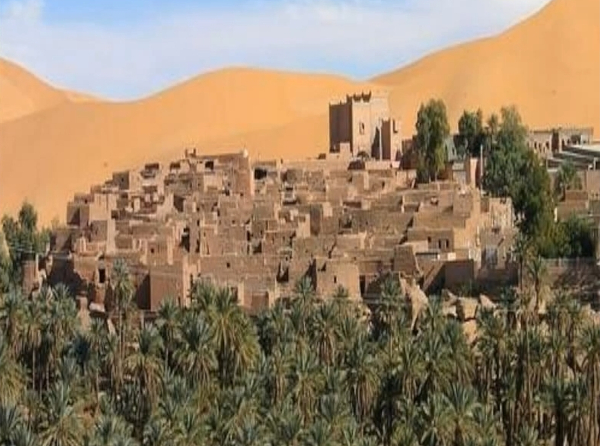


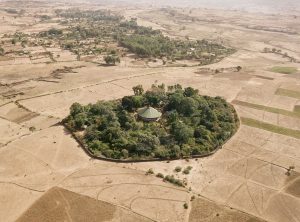
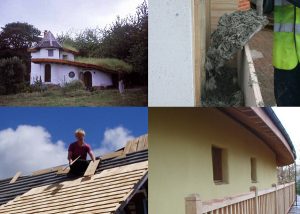
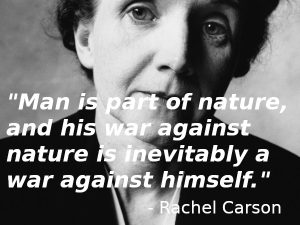
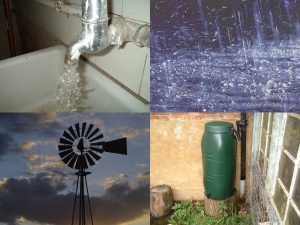
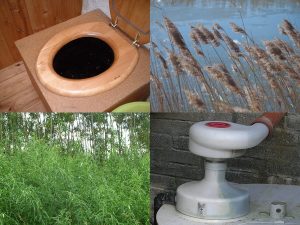
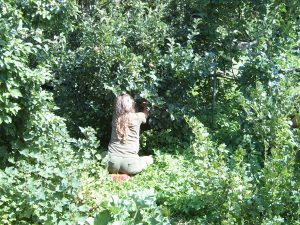
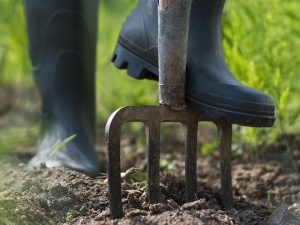

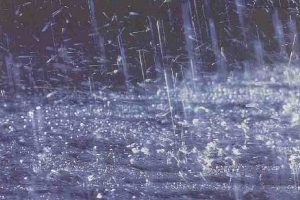
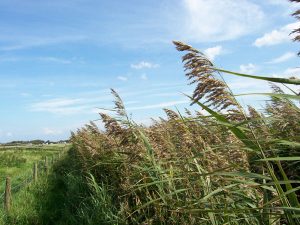

10 Comments
El Habib Ben Amara, Thank you for a most wonderful article. Would that it could be trumpeted from the rooftops throughout North Africa. I know you have been trying for years to wake people up and you have endured ridicule and oppression for doing so. But hopefully your day will yet come and the ancient traditions can be made whole again. Very good idea to use the Quran to raise awareness. The Prophet said a lot of wise things and people cannot lightly brush them aside. Definitely use Geoff Lawton’s video on The 2000 Year Old Food Forest in Morocco. And Neal Spackman’s video on the Al Bayda project in Saudi Arabia. I am also a big fan of Michael Kravcik. A great feat for you to translate his work into French and Arabic. I continue to produce content on water harvesting and agroforestry. . Use as much as is useful for you. I am promoting medicinal food forests and if I ever get an online course together would love for you to be part of it.
A salaam alaikum
Thank you for writing and publishing this article! It is precious and also a pleasure to read.
Peter
Thank uou Peter. You know….
[email protected]
Wonderful. With people like El Habib we can avoid re-inventing the wheel.
Thankyou for these wonderful articles and stories of how your community traditionally relates to nature and to water and your work! Do you know of the work of Sekhem in Egypt? They have been developing biodynamic farming for dryland agriculture for many years now, schools, a university, technical college, many farms, and much else, and are a UN environmental exemplar. I visited there in 2011, and met Helmy Abouleish, the director. I put a Sekhem case study in our book, Designing Regenerative Food Systems, (2022) by Marina O’Connell
Martin – I notified Habib, cheers.
Thank you, Dave and Martin. Yes, I saw videos of the exemplary work done by Essekem in Egypt—an inspiring example to follow. I’m looking forward to reading your book Martin.
Thank you for a wonderful article! Indeed, the ancient wisdom of small scale (and not big or high tech) nature based solutions needs to be brought forward as the most suitable and advanced solution in our land use plans, adaptation and mitigation plans and even disaster resilience plans. These solutions recognize the systemic interconnections and cultural values and it is the way forward to grow prosperity. I will share it as much as I can. Please keep up the good work and energy forward!
Thank you Ase.
It will take some time to understand this mammoth work. My gratitude to the Author to draw my attention to this mine of Wisdom.